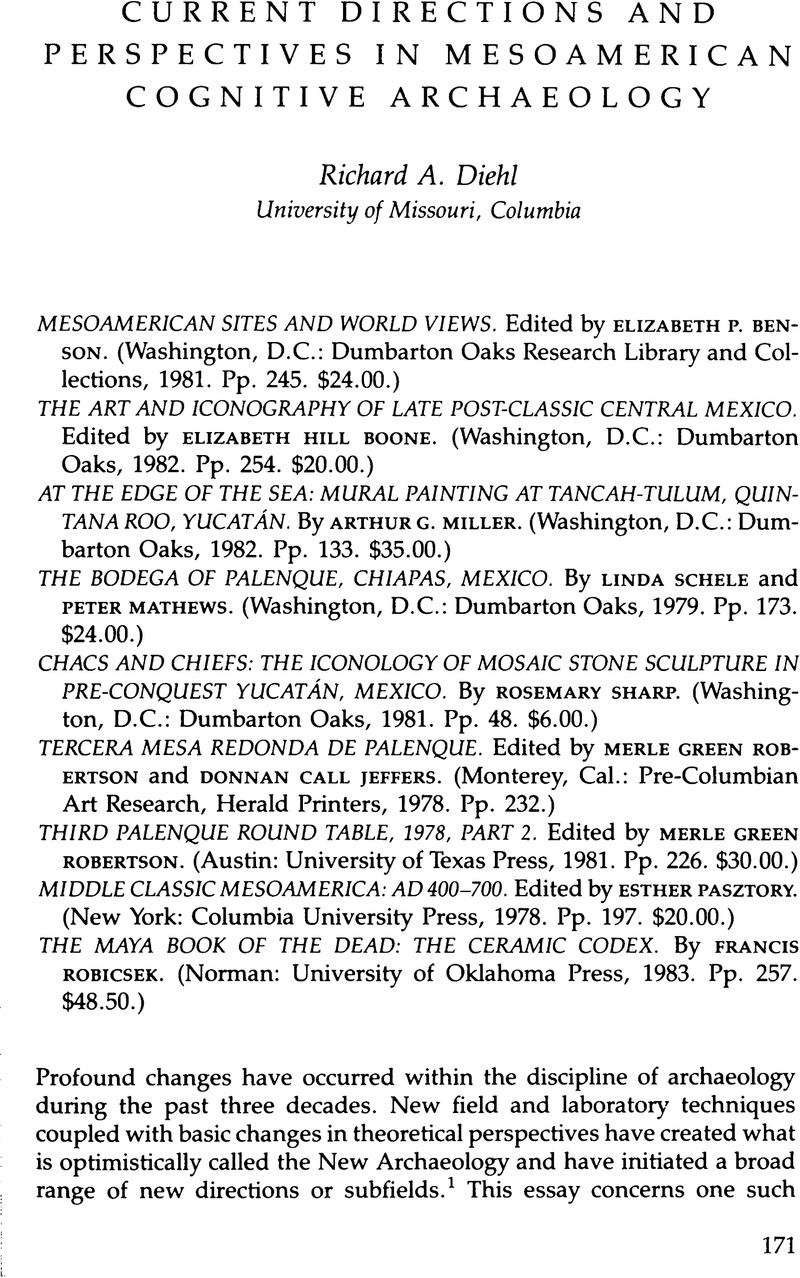No CrossRef data available.
Published online by Cambridge University Press: 24 October 2022

1. Glyn Daniel, A Short History of Archaeology (London, 1981), pp. 178–211; and Gordon R. Willey and Jeremy A. Sabloff, A History of American Archaeology, 2nd ed. (San Francisco, 1980), pp. 181–266.
2. Herbert J. Spinden, A Study of Maya Art (Cambridge, Mass., 1913).
3. Cecilia F. Klein, “The Relation of Mesoamerican Art History to Archaeology in the United States,” in Pre-Columbian Art History: Selected Readings, edited by Alana Cordy-Collins (Palo Alto, CA, 1982) pp. 1–6; Donald Robertson, “Anthropology, Archaeology and the History of Art,” in Codex Wauchope: A Tribute Roll, edited by Marco Giardino et al., pp. 73–80 (New Orleans, 1978).
4. George Kubler, The Shape of Time (New Haven, 1962).
5. George Kubler, The Art and Architecture of Ancient America: The Mexican, Mayan, and Andean Peoples (Baltimore, 1962).
6. Clemency Coggins, “A Role for the Art Historian in an Era of New Archaeology,” in Actes du XLII Congrès International des Americanistes, Paris, 2–9 September 1976, pp. 315–20; Cecilia Klein, “Mesoamerican Art History.”
7. Cecilia Klein, “Mesoamerican Art History,” p. 4.
8. George Kubler, “Science and Humanism among Americanists,” in The Iconography of Middle American Sculpture (New York, 1973), pp. 163–67; H. B. Nicholson, “Preclassic Mesoamerican Iconography from the Perspective of the Postclassic: Problems in Inter-pretational Analysis,” in Origins of Religious Art and Iconography in Preclassic Meso-america, edited by H. B. Nicholson (Los Angeles, 1976), pp. 156–75.
9. David H. Thomas, Archaeology (New York, 1979), p. 458.
10. See Kent V. Flannery, “The Cultural Evolution of Civilizations,” Annual Review of Ecology and Systematics 3 (1972): 399–426; Kent V. Flannery and Joyce Marcus, “Formative Oaxaca and the Zapotec Cosmos,” American Scientist 64 (1976): 374–83; and Joyce Marcus, Emblem and State in the Classic Maya Lowlands (Washington, D.C.: Dumbarton Oaks, 1976).
11. Michael D. Coe, The Maya Scribe and His World (New York, 1973); Classic Maya Pottery at Dumberton Oaks (Washington, D.C., 1975); The Lords of the Underworld (Princeton, N.J., 1978); Old Gods and Young Heroes, the Pearlman Collection of Maya Ceramics (Jerusalem, 1982).
12. Karl E. Mayer, The Plundered Past, pp. 37–38 (New York, 1973).
13. Colin Renfrew, “Divided We Stand: Aspects of Archaeology and Information,” American Antiquity 48, no. 1: 12–15.
14. Leslie White, The Science of Culture (New York, 1949).